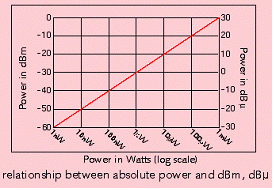데시벨, 디비
dB
데시벨의 약어. 상대전력비에 대한 로그값의 1/10 값으로, 0.1 B(벨) 과 같다. 주 : 1) 데시벨은 벨보다 더 작은 값으로 표현되고 더 편리하게 사용되기 때문에 상대전력비에 대한 일반적인 표현 방법이다. dB 는 다음 식과 같이 주어진다.

여기서, P 1 과 P 2 는 실제 전력이다. 전력비는 전압 E 와 임피던스 Z 의 항으로 또는 전류 I 와 임피던스 Z 의 항으로 표현될 수 있다.

그러므로, 또한 dB 는 다음과 같이 주어진다.

만약, Z 1 = Z 2 라면,

가 된다. 2) dB 는 회로가 직렬로 연결될 때 dB 로 표현된 전력레벨을 대수적으로 더하거나 뺄 수 있기 때문에, 대수적 비율이나 백분율보다 더 많이 사용된다.
Abbreviation for decibel(s). One tenth of the common logarithm of the ratio of relative powers, equal to 0.1 B (bel). Note 1: The decibel is the conventional relative power ratio, rather than the bel, for expressing relative powers because the decibel is smaller and therefore more convenient than the bel. The ratio in dB is given by

where P 1 and P 2 are the actual powers. Power ratios may be expressed in terms of voltage and impedance, E and Z , or current and impedance, I and Z , since

Thus dB is also given by

If Z 1 = Z 2 , these become

Note 2: The dB is used rather than arithmetic ratios or percentages because when circuits are connected in tandem, expressions of power level, in dB, may be arithmetically added and subtracted.
http://www.its.bldrdoc.gov/fs-1037/

|
|